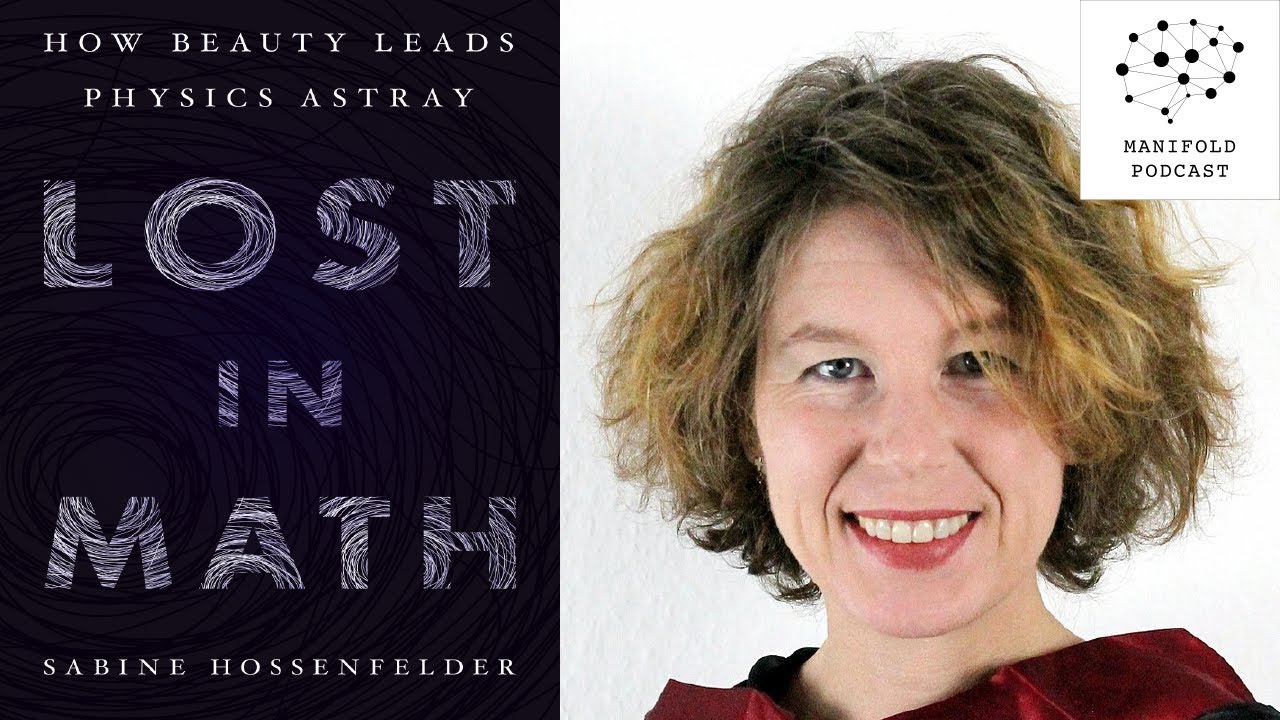Manifold
Hossenfelder is a Research Associate at the Frankfurt Institute of Advanced Studies. Her research areas include particle physics and quantum gravity. She discusses the current state of theoretical physics, and her recent book Lost in Math: How Beauty Leads Physics Astray.
The Uncertain Future of Particle Physics
https://www.nytimes.com/2019/01/23/opinion/particle-physics-large-hadron-collider.html
Lost in Math: How Beauty Leads Physics Astray
https://www.goodreads.com/book/show/36341728-lost-in-math
man·i·fold /ˈmanəˌfōld/ many and various.
In mathematics, a manifold is a topological space that locally resembles Euclidean space near each point.
Steve Hsu and Corey Washington have been friends for almost 30 years, and between them hold PhDs in Neuroscience, Philosophy, and Theoretical Physics. Join them for wide ranging and unfiltered conversations with leading writers, scientists, technologists, academics, entrepreneurs, investors, and more.
Source




Sabine should follow Scott Adams to understand people
If I had seen this vido when It first came out, I would have responded to it straight away. I honestly believe I can proffer an Hypothesis that will give an answer to many of the problems that you are looking for.
Consider, the atom not composed as it is described in the standard model, but with the whole of the area between the nucleus and the outer boudary of the atom being filled with incredibly tiny negatively charged monopole particles, ' Harveytrons ', forming a cloud, which fills every available empty space throughout the universe. This is what I propose is ' Dark Matter '. The negative force of repulsion it produces is 'Dark Energy '. It is a component of gravity, and is what is causing the expansion of the universe
This is the cornerstone of a very radical hypothesis that I am working on.
The standard model of the atom is fundamentally flawed, for the following reasons amongst others,
a). How is it possible for a single electron as in the case of the hydrogen atom, to form an ' Electron Cloud ', that fills the whole area between the nucleus and the outer boundary of the atom, at every moment in time, when this area is over 100,000, 000 times that of the electron?
b). If the electron does act as desribed in the standard model, by whizzing around the nucleus, changing trajectory many thousands of timmes a second, where does it get its energy from to initiate and maintain its momentum?
c). Following on from b). this momentum and changing trajectory, would require energy to be expended, and thus dissipating heat. Therefore every atom and thus all matter would be emitting heat, which plainly it is not?
d). How is it possible for the electron to have the same charge holdig capacity as the proton, which is around 2,000 times its size. It would be like a tiny watch battery having the same charge holding capacity as a very large tractor battery?
I propose that the electron as we know it, is not in fact a fundamental solid particle, but a cluster of the particles I describe above. I am of the opinion that the standard model is far to complicated to be a viable model.
I believe that all the exotic particles are in fact man-made particles, or should I say just pieces of atomic matter, broken away from the atom as a result of smashing pieces together.
As I said, My hypothesis is very radical, and in my model there are only two particles that make up everything in the universe. One is the particle that I have described, together with a corresponding positively charged monopole particle.
all of the components that make up the nucleus, are composed of these two particles, everything else consists of the ' Harveytron cloud '. I can explain more if you are interested, including gravity. Kind regards, Tony Marsh.
My guess is that it is "SUper SYmmetry" (SUSY) .